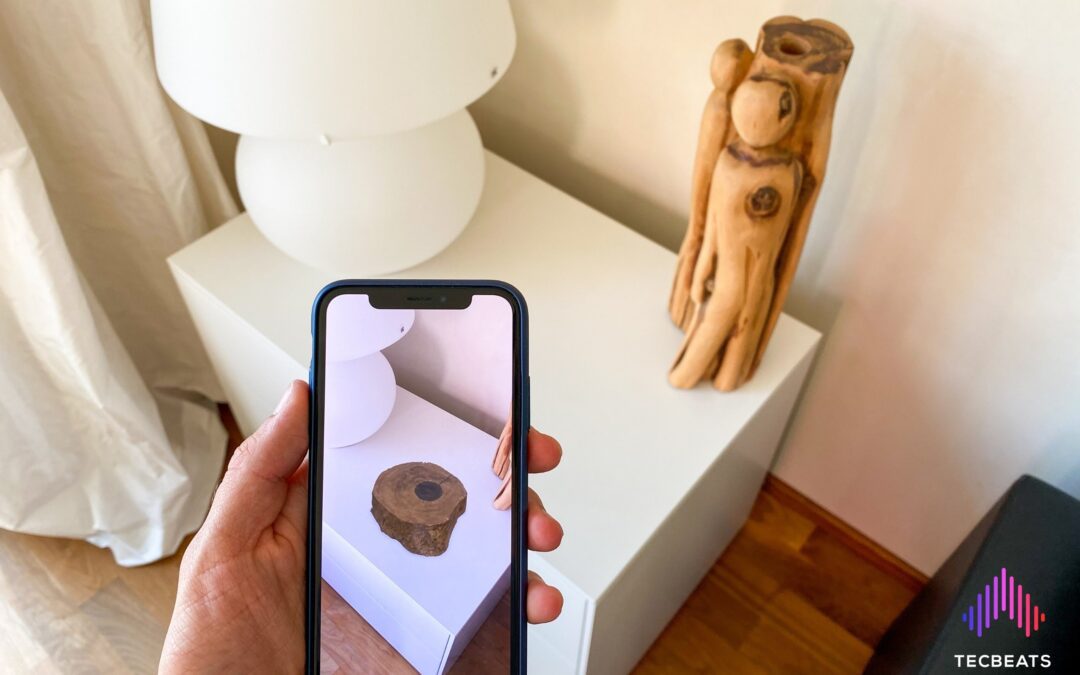What is augmented reality?
Augmented reality is a technology that adds virtually generated images to the real-world view, resulting in a composite view. In other words, it integrates digital or virtual information into what the user is seeing in real-time.
This technology adds sensory information to the user’s view through a device such as a smartphone, glasses, or tablet, creating an intertwined vision of reality and added elements. What it seeks is to enrich what the user is seeing, adding videos, images, and sounds, among other elements.
Although the development of augmented reality is constantly evolving, for now, all its uses require a device sophisticated enough to create these elements virtually generated to the user’s real vision.To achieve this, devices require fast processors, sensors, and screens to overlay 3D images on real-world objects. The more advanced the hardware, the more possibilities augmented reality will offer. For example, if the device has compasses and GPS, the experience will include real-time orientation and location.
Augmented reality vs Virtual Reality
Many times, these two concepts are confused or thought to be the same. However, they are two different things. While augmented reality seeks to superimpose virtually generated objects into the real world, virtual reality immerses the user in a 100% virtually created environment.
Virtual reality creates a simulated environment that the user interacts with through a headset or goggles. Sometimes, additional devices like gloves are necessary for a more immersive experience. The user feels that he is in another place, another world, or another reality.
Let’s take it to an example of our daily life: Examples of augmented reality include displaying a line in NFL games for players to reach or showing player statistics during an NBA game while simultaneously watching the game. Virtual reality is commonly used in video games, where the user wears a headset to become fully immersed in a digitally created world.
Augmented reality uses
The uses and applications of augmented reality are as varied as the user or whoever needs it can imagine. From entertainment to production, to health services, and military or scientific uses.
- Many brands use virtual reality to place their products within a real image, so customers see their products being used in real life, making them much more attractive and easier to understand.
- Plant supervisors in factories can monitor the work performed by operators remotely and in real-time, while augmented reality can show them parts that are broken or need to be fixed.
- The Gatwick airport passenger app: through a mobile application, passengers have the opportunity to see the airport map and be guided to where they should go, their gates, check-in desks, and immigration, among other places. This greatly improved the user experience and passenger traffic within the airport.
- Ikea: through its mobile application, users can see on their cameras how the furniture or different objects they want to buy would look like, in their homes, or located wherever they want. So they can try the different types of furniture and choose if they look good if they match with the rest of the things if they should choose another color or size, etc.
- Many make-up brands use augmented reality so that users can use their phone’s front camera to see how their products look, choose colors and shades, combine products and see how they go together. Not only does it save time and money, but it calls users into a concept of makeup “play”.
Mixed reality
Mixed reality blends augmented and virtual reality to create 3D simulations of real objects, seamlessly combining actual and virtual elements.
As technology progresses, the potential for combining previously unthinkable elements in the digital world with the real world through simulations increases.
The future of augmented reality
The future of mixed reality is full of possibilities, and it will undoubtedly continue to evolve and transform our perspective on reality. New business models, new products, products that will become obsolete and cease to exist, and better production processes. These are just some of the contributions that augmented reality can add to our lives.
In conjunction with the specific development of these technologies, there are aspects that are beginning to perfect the experiences they provide. For example, the development of 5G networks will make the speed of navigation and the use of augmented reality much more comfortable and agile. In the same way, new processors allow better images with more definition and better quality.


